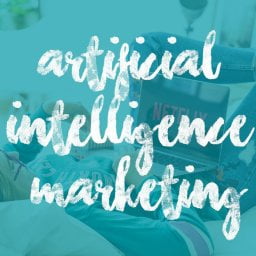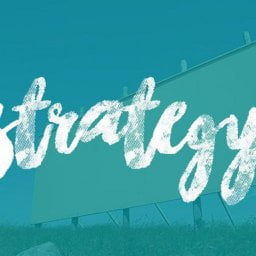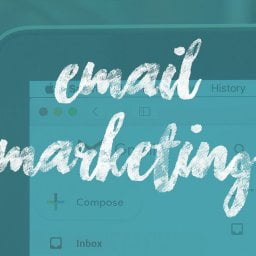Omni-channel Marketing.
Omni-channel marketing is multi-channel marketing done correctly and seamlessly. It is the interaction between a business and its customer that has a multi-faceted approach across numerous channels. Consumers are no longer engaging with a company via a physical store but online on a website, mobile app, through a catalogue, on social media platforms and mobile notifications.
It’s not just where businesses are meeting their customers but how, with mobile smartphone usage continuously increases as well as tablet, desktop, laptop, smart TV devices being in the mix. Each consumer touch point should provide a consistent and complementary customer experience.
Video Content.
Video remains the content King and will hold its place firmly in 2019. The must-have video element will be closed-captioning. This allows people to watch video content in public spaces such as cafes, on public transport and yes, at the office.
“85% of videos are played without sound on Facebook. Therefore, you have to create videos in which the audio is a peripheral, not a core feature” (Chantal India, 2018)
https://www.cyberclick.es/
Your Website Copy Should Be All About Selling.
A lot of people believe that when creating website content the most important thing is to include as much information as possible about why their business is the best. Contrary to this common belief Angus says that it is more important to carefully consider your content and focus on the question of “who are you talking to and who are you talking about?” He explains that “In a conversation with someone you don’t really enjoy listening to them talk about themselves, you want them to also ask questions about you. Treat your website the same. Like you are engaging them in a conversation. Who are they? What do they need?” When writing copy for a website use tone and language that your intended visitor will respond to and make it about them, not all about you.
You’re the voice.
The integration of voice-activated commands with voice-activated assistants like Amazon Echo and Google Home is rising. Gartner predicts that by 2020, 30% of web browsing sessions will be done without a screen. The way we talk is different from the way we type and up until now content has been created with written search terms in mind. Typed search terms are shorter and keyword focused whereas voice search terms are longer, with more naturally phrased keywords and expressions.
A multi-prong approach.
People don’t usually make a purchase or buying decision on the first go, they need multiple reminders of your brand to move them along their buyer journey. The multi-prong approach means providing the customer with multiple touch points. You should have one coherent message across all company assets including web design, graphic design, video, content, social media and digital marketing as part of your strategy. One person might see an ad on Facebook which leads them to a website where they might save or highlight an item of interest, which they then go back and look at later on. A multi-prong approach will include making sure this customer gets sent a reminder email about the product, or personalised Facebook ads encouraging them to invest in the item.
Deep data.
Capturing data and measuring the success of your marketing efforts has never been easier. With new data analysing software being created all the time, you can break down data into easy-to-understand reports that help you have a deeper understanding of customer behaviour. This allows you to create more effective digital strategies. Being able to see your customer’s likes, dislikes, shopping behaviours, content consumption and engagement rates, allows you to tailor your message so that it reaches the right customer and speaks to them in a language they understand and connect with.
Hyper-personalisation.
There is no one approach fits all and with the sheer amount of information being uploaded every day, if it’s not relevant to your customer, they won’t respond to it. With deep data tracking, this has opened the door for hyper-personalisation. This allows businesses to tailor content and product offerings based on a consumer’s purchase history, online behaviour, clicked links and shared content.
Micro-influencers.
The Social Media influencers of Instagram, Twitter, Facebook and YouTube are losing their credibility with the increasing amount of paid promotions and sponsored content they produce. People are catching onto this and are less engaged while at the same time companies are finding this methodology to be expensive. This has lead to the rise of the micro-influencer. A micro-influencer has a smaller but more engaged following than a regular influencer. Usually they have cornered a niche market and are considered to be trustworthy. Micro-influencers are essentially a monetised word of mouth referral that is getting some traction already for a fraction of the cost.
Email Automation.
Email marketing is still popular with 5.6 billion active email accounts. 53% of businesses say that email marketing generates the most ROI. The role of automation is predicted to increase with software such as ActiveCampaign, Infusion Soft, Marketo, Hubspot and more, allowing businesses to create custom workflows to guide customers on a tailored journey. This level of personalised and time-responsive content increases email open rates and engagement whilst cutting down on mundane repetitive tasks, saving time and money.
https://www.statista.com/
Live interactions, drip-fed content.
The rigid façade of business and corporate branding is breaking down and corporate humanity is making a comeback. Connecting to your audience begins with telling a story. Think behind-the-scenes tours of your office, employee highlights, product demos/releases and live Q&A’s. The conversation with your clients should be a two-way street. Let them get to know you as you get to know them.
Instagram stories are a perfect example of drip-fed content. Snippets of content across the day are more engaging than one block in the morning or evening, encouraging your audience to ‘check-in’ with what your business is up to throughout the day.
Chatbots and AI.
Mass communication is now 24/7 between companies and their customers. Chatbots allow businesses to respond and engage with customers at any time and have improved to have the ability to hold a basic conversation and answer frequently asked questions; boosting customer satisfaction. The quickened response rate on Facebook for example can improve the SEO and a positive association with your brand.
If you’d like to up your Digital Marketing game in 2019 but don’t know where to start, the experts at Bear Marketing can help. Get in contact today.







